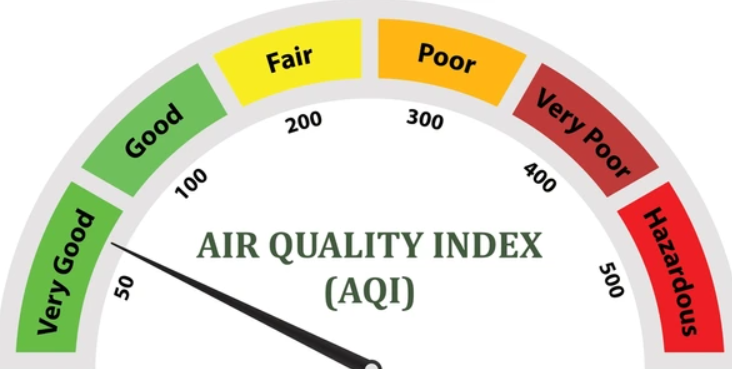You might not see it or think about it every day, but the air inside your facility plays a major role in the safety, productivity, and long-term worker health. Poor air quality can trigger respiratory issues and expose your team to hazardous materials that have long-term ramifications for everyone involved. If you’re running an industrial facility, you already know the stakes are high. What you might not realize is how much control you actually have over the air everyone’s breathing.
Here’s how to improve air quality in your industrial facility without overhauling your entire operation.
- Start With an Air Quality Assessment
Before you can improve anything, you need to know where things stand. That means testing your facility’s current air quality and looking for common industrial pollutants, like dust, fumes, chemicals, volatile organic compounds (VOCs), and other airborne hazards. These can come from almost anything, but are especially common with heavy machinery and equipment.
Bring in a certified industrial hygienist or environmental engineer to perform an air quality assessment. They’ll use specialized equipment to identify risks, measure pollutant levels, and make specific recommendations based on your layout and operations.
- Upgrade or Maintain Your Ventilation System
Ventilation is one of the most important safeguards against airborne contaminants. When your system is functioning properly, it continuously exchanges stale, polluted air for clean, filtered air. But if it’s outdated or poorly maintained, it can actually end up recirculating the very particles and fumes you’re trying to eliminate.
Start by having your current ventilation system professionally inspected. You need it to include strategically placed intake and exhaust points that allow for steady airflow throughout the entire facility – not just in certain areas. And make sure vents are unobstructed by machinery or stacked inventory, and that fans are running at optimal speeds to pull contaminants out efficiently.
It’s also critical to stay on top of filter maintenance. Dirty or overloaded filters can drastically reduce your air system’s effectiveness and allow harmful particulates to build up over time. (Schedule regular cleanings or replacements based on usage levels and industry best practices.) In some environments, this might mean switching to HEPA filters or other high-performance options that capture finer particles.
In facilities where air pressure is a factor – such as in manufacturing, welding, or painting operations – consider using make-up air units. These bring in clean, tempered air to balance pressure and improve indoor air quality, especially when strong exhaust systems are in use. In short, a proactive approach to ventilation can help you meet required codes and protect your people. This results in a healthier bottom line (and work environment).
- Use Nitrogen Purging for Hazardous Environments
In specific industrial settings – especially those involving flammable materials or sensitive chemicals – nitrogen purging is a game-changer. If you’re not using it, you could be leaving your facility vulnerable.
Nitrogen purging works by displacing oxygen and other gases with nitrogen, which is inert and non-reactive. It’s commonly used in:
- Chemical manufacturing
- Oil and gas operations
- Pharmaceutical production
- Food processing facilities
When you remove oxygen from tanks, pipelines, or closed systems, you reduce the risk of combustion and chemical degradation. It also helps maintain cleaner, more stable air in sensitive zones.
Just make sure it’s done correctly. You’ll want to use a professional nitrogen purging system and follow all safety protocols. Nitrogen might be inert, but that doesn’t mean it’s risk-free in enclosed environments.
- Keep Dust and Particulate Matter in Check
Industrial processes generate a lot of dust – metal shavings, sawdust, powders, and even microscopic particles that float around long after the workday ends. If you let them build up, they’ll eventually end up in your workers’ lungs or on your equipment.
To control this:
- Use dust collection systems at the source (saws, grinders, conveyors)
- Install air scrubbers or HEPA filters in high-dust areas
- Clean surfaces frequently – don’t let fine dust settle and recirculate
- Seal floors and other surfaces to reduce the amount of dust that gets kicked up
It’s easy to reduce the idea of dust to “dirt.” And while, yes, nobody wants to look at dusty surfaces, it’s much more dangerous than that. When dust lingers undetected, it can impact everyone’s health and safety. The more proactive you are, the better it is for everyone.
- Invest in Real-Time Air Monitoring
Conditions can change quickly in an industrial environment. A safe zone in the morning could become a hazard zone by lunch if there’s a leak, malfunction, or process change. That’s why real-time monitoring is so valuable.
Install air quality sensors that constantly measure key pollutants like carbon monoxide, VOCs, humidity, and temperature. Some systems even provide alerts if readings cross safe thresholds, giving you time to respond before a small issue turns into an emergency.
Plus, you’ll have data to track long-term trends, document compliance, and spot recurring issues. It’s a small investment that pays off in peace of mind – and liability prevention.
- Educate Your Team About Air Safety
Even the best systems won’t matter if your team doesn’t understand their role. Air quality isn’t just a facility issue – it’s a people issue. You need employees to recognize warning signs, follow safe work habits, and report problems immediately.
Make air safety part of your regular training. Teach your team:
- How to recognize symptoms of poor air (headaches, fatigue, dizziness)
- The right way to store and dispose of chemicals
- When to use PPE like respirators or masks
- How to report leaks, spills, or system failures
Don’t Wait Until There’s a Complaint or Fine
You should be as proactive as possible with indoor air quality, even if it isn’t the most pressing matter from a visual perspective. Poor air quality can be a silent killer of your team’s productivity and individual employee’s health. Get on top of this issue and you’ll have one less thing to worry about.













